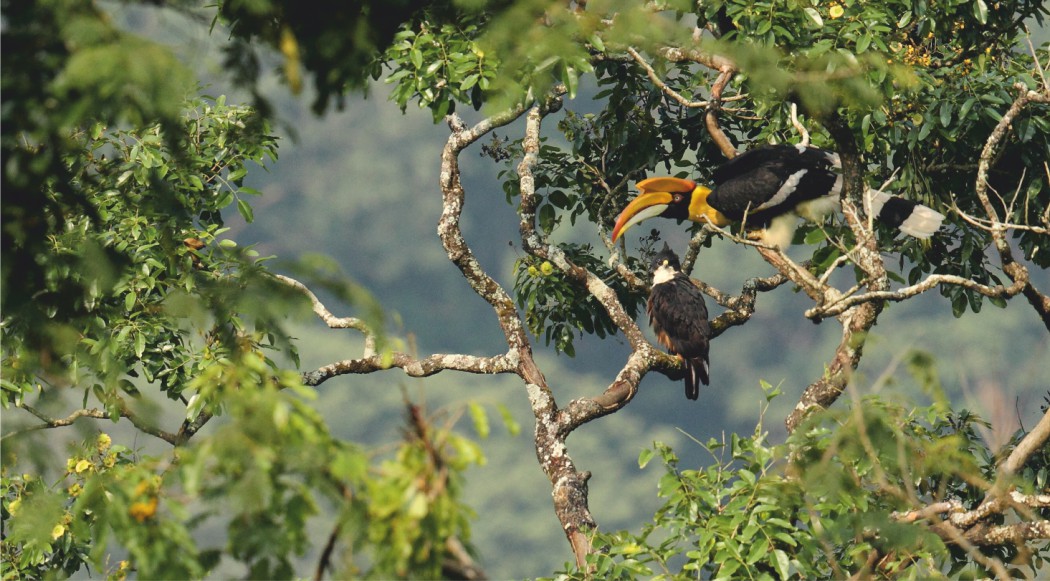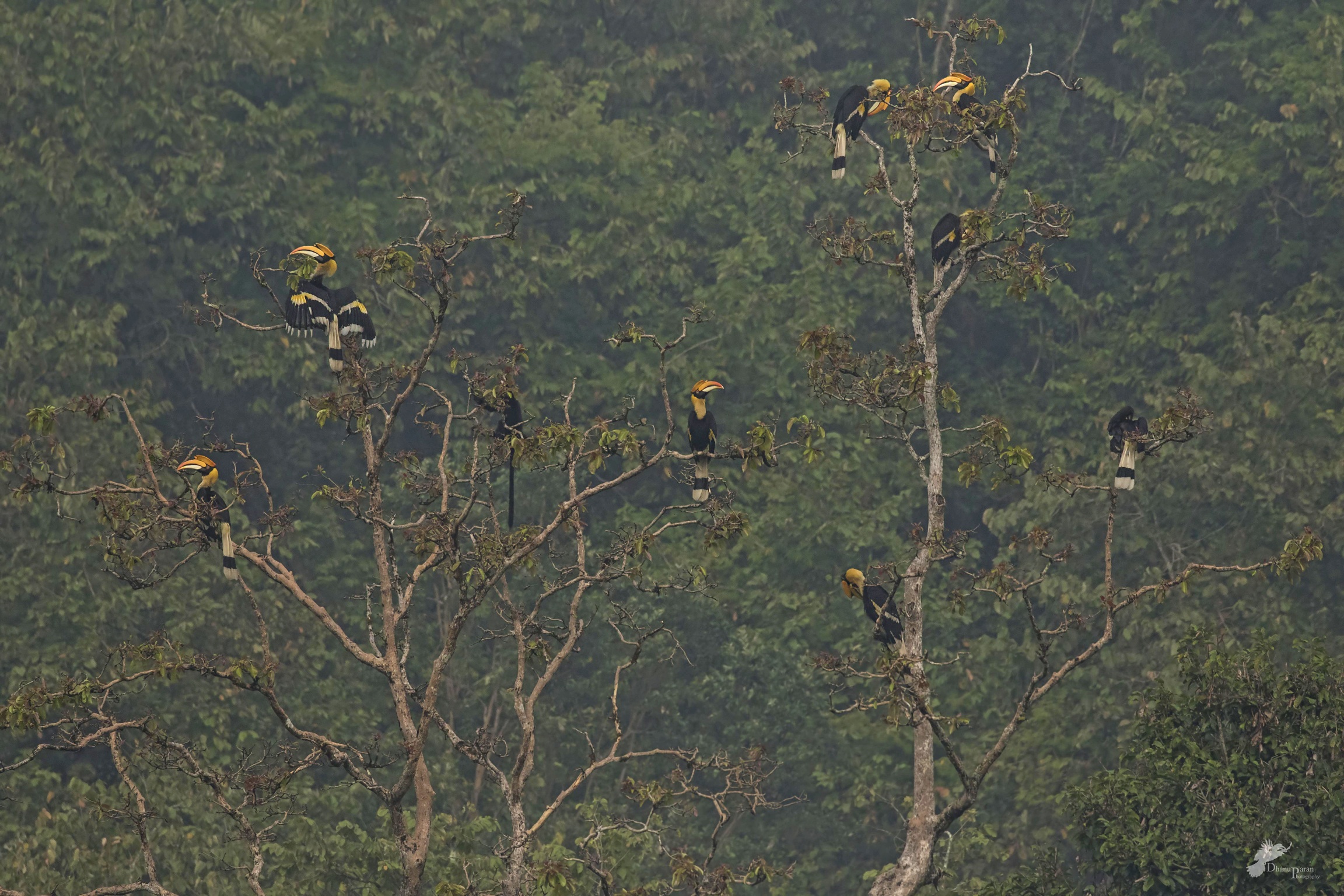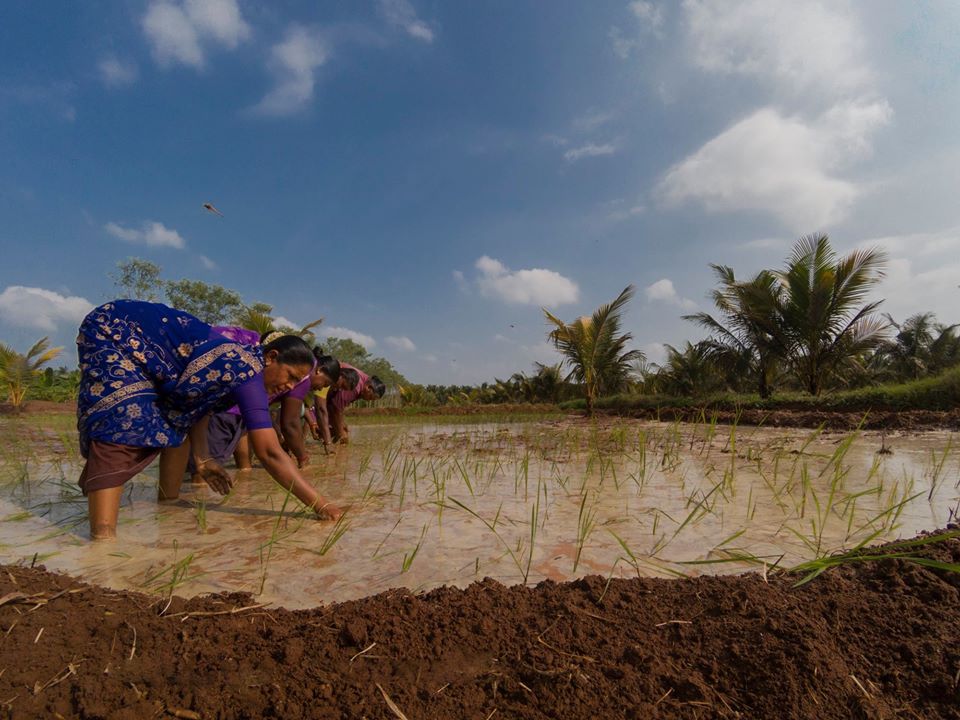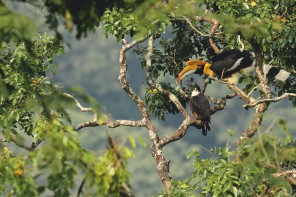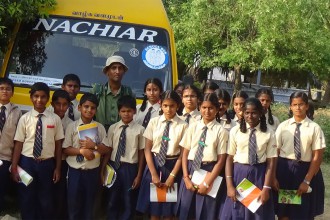Featured image – Great Pied Hornbill and Rufous Bellied Eagle | Credits – Prakash Ramakrishnan
The Anamalai region, part of the bio diversity rich Western Ghats is not only famous for large mammals such as Asiatic elephant, Gaur, Tiger and Leopard, but also for its rich avifaunal diversity. When we think of birds of Anamalai’s, immediately, The Great Hornbill comes to our mind. Indeed, Anamalai region is one of the main strongholds of Great Hornbill populations in the world. Other interesting birds species occur in this region are Malabar Trogon, Black Eagle, Rufous-bellied Eagle and Oriental Bay Owl.
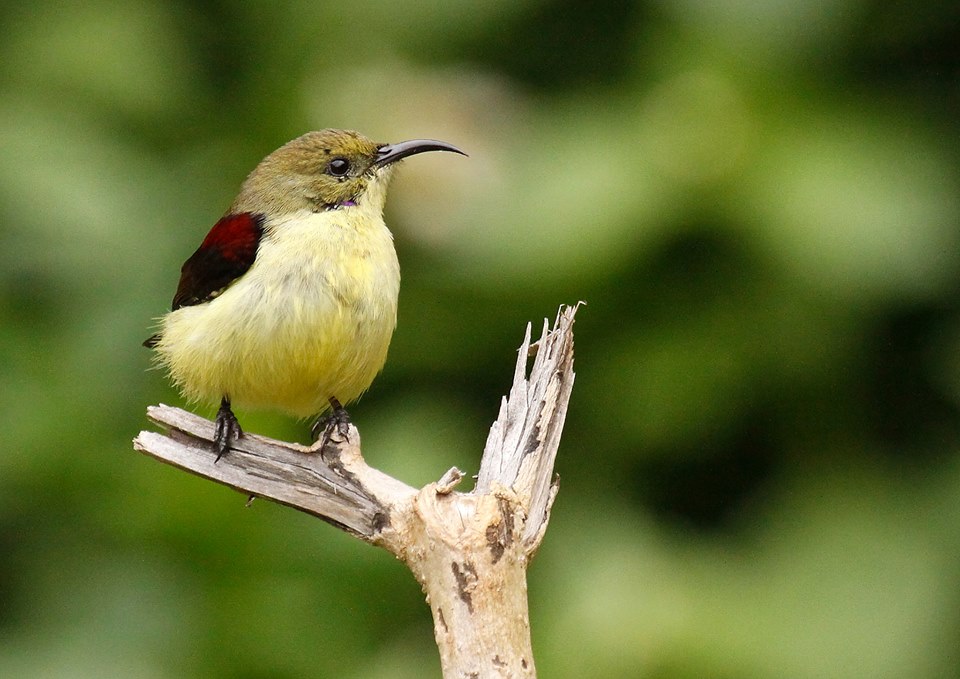
Several Western Ghats endemics such as Crimson-backed Sunbird, Kerala and Wynaad Laughing Thrushes, White-bellied Blue Robin are also found here.
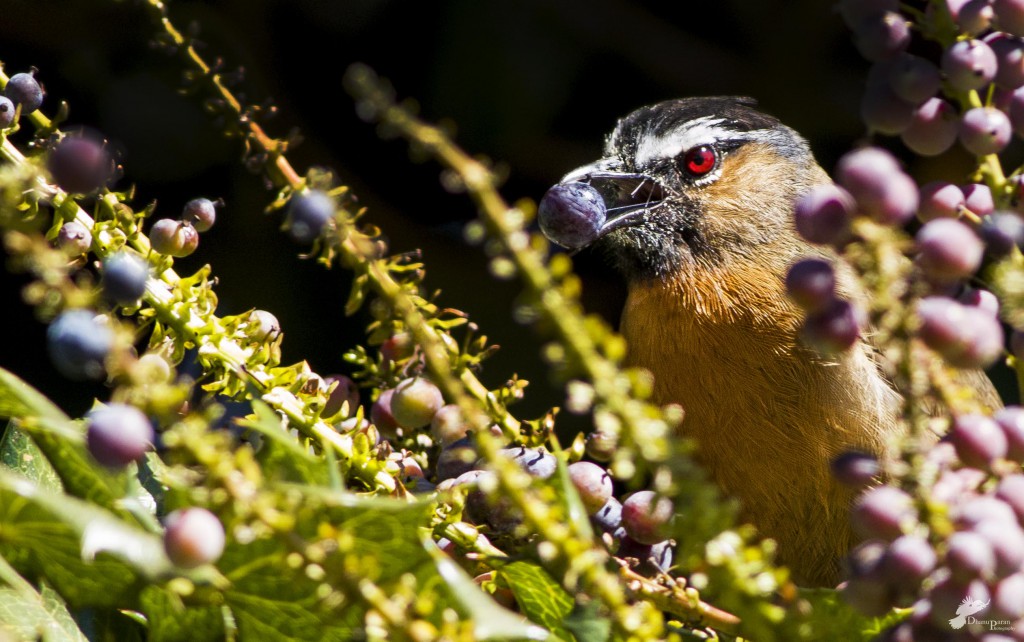
The ATR is the first to be home to all the endemic species of birds of the Western Ghats. This speaks volumes about the conditions and topography of the Anamalai’s as an ideal habitat for bird life.

Various migrants such as Grey Wagtail, Brown Shrike, Greenish Warbler, Ashy Drongo, Common Rosefinch and Rosy Starling enrich the birdlife, especially of the forested part of Anaimalai region.ATR consists of various types of habitats such as, thorny scrub, dry and moist deciduous, riverine forest, tropical rainforest and shola-grassland. All these habitats as well as man-made habitats such as monoculture plantations and large reservoirs harbour variety of birds.
Totally around 230 bird species has been reported from this region so far. However, the number of species will increase if the checklist is updated with the recent records of birds reported from this region. It is essential to document the bird life of various parts of Anaimalai region in systematic and periodical manner.
Below are some of the endemic birds of Anamalai’s:

The Western Ghats are home to 16 species of endemic birds;
Black and Orange Flycatcher
Broad-tailed Grass bird
Crimson-backed Sunbird
Grey-breasted Laughing thrush
Grey-headed Bulbul
Malabar Grey Hornbill
Malabar Parakeet
Nilgiri Flycatcher
Nilgiri Laughing thrush
Nilgiri Pipit
Nilgiri WoodPigeon
Rufous Babbler
White-bellied Blue Flycatcher
White-bellied Shortwing
White-bellied Treepie
Wayanad Laughing thrush
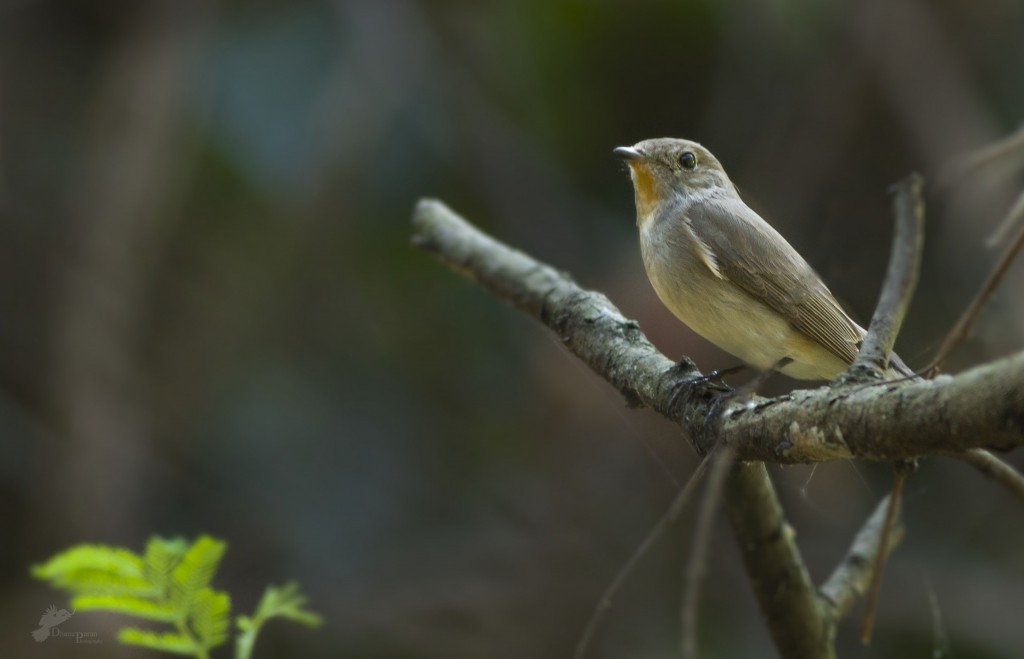
First record of Taiga Flycatcher in ATR – Taiga flycatcher is formerly considered the sub species of Red-breasted flycatcher. Given the winter distribution of the Taiga Flycatcher as mainly in north-eastern, and eastern India, central India, and the Eastern Ghats, reaching up to western Maharashtra, and Goa, this photograph by Dhanu Paran comes as its first known record in the ranges of the Anamalai’s Tiger Reserve.
FLYER FACTS:
GREY WAGTAIL:
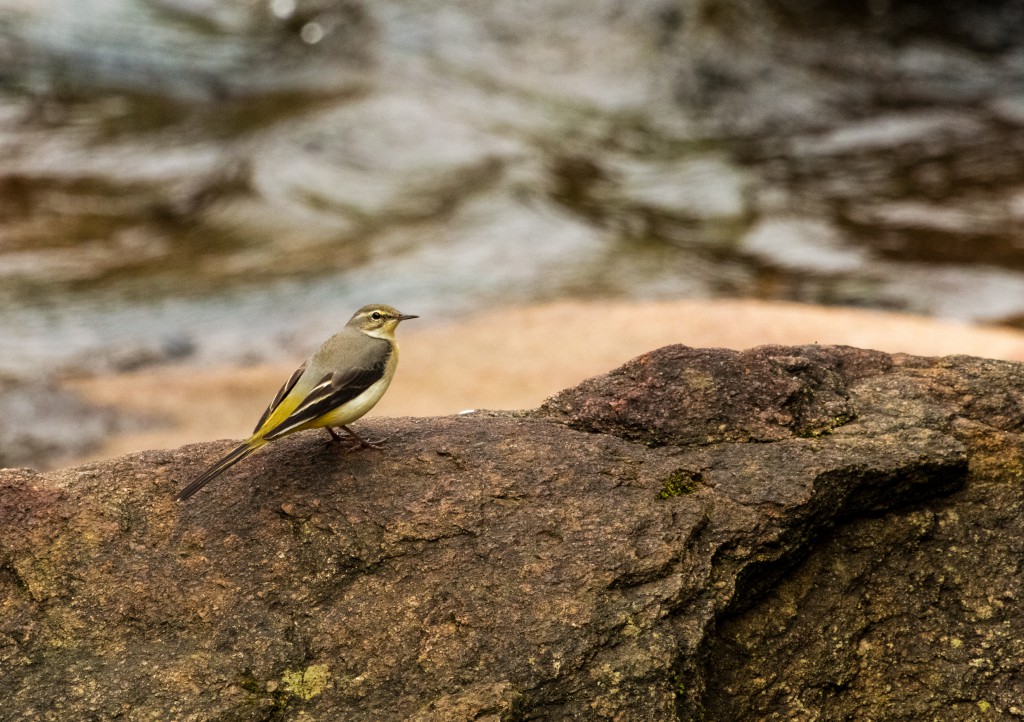
One of the common winter migrants to South India, it reaches ATR around August–September and leaves by March –April. With several populations breeding in Europe and Asia, some travel about 200 kilometres to its wintering ground here in ATR with some exhibiting a phenomenon called “Site Fidelity”-the ‘epic willfulness’ that baffles scientists and amateur birdwatchers alike. Site fidelity is the bird’s habit of coming to the same site year after year.
COMMON HAWK CUCKOO:
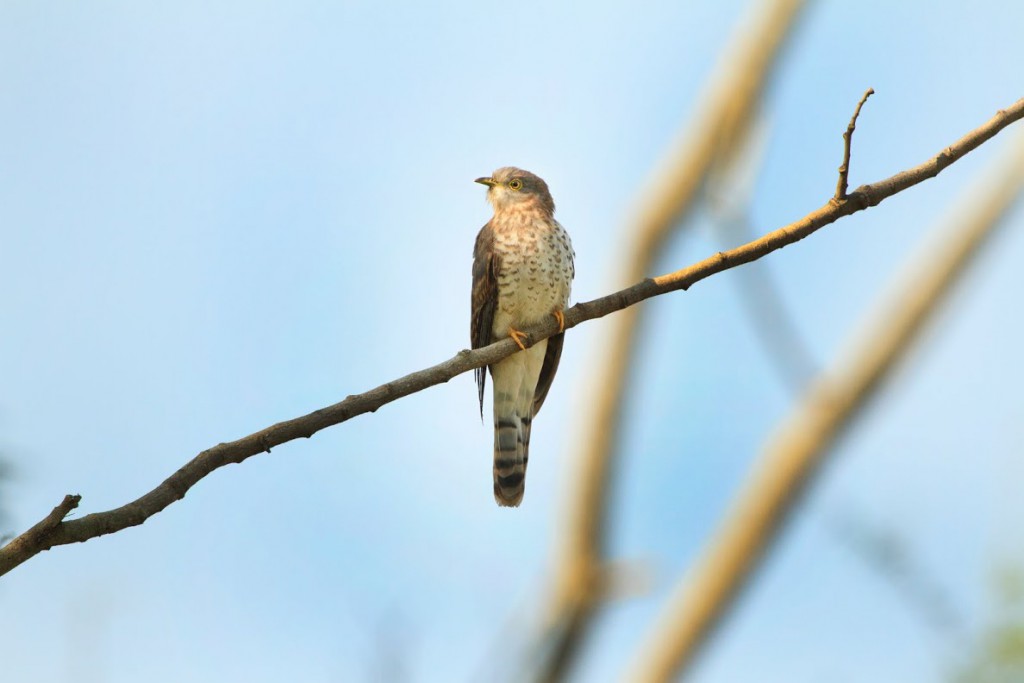
The Common hawk Cuckoo, the Brain-fever bird: The hawk-cuckoo, like many other cuckoos are brood parasites, laying their eggs in nests of other birds, mainly babblers. They are popularly known as the brain fever bird, because during their breeding season in summer, males produce loud, repetitive three note calls that are well-rendered as brain-fever, the second note being longer and higher pitched.
MALABAR TROGON:
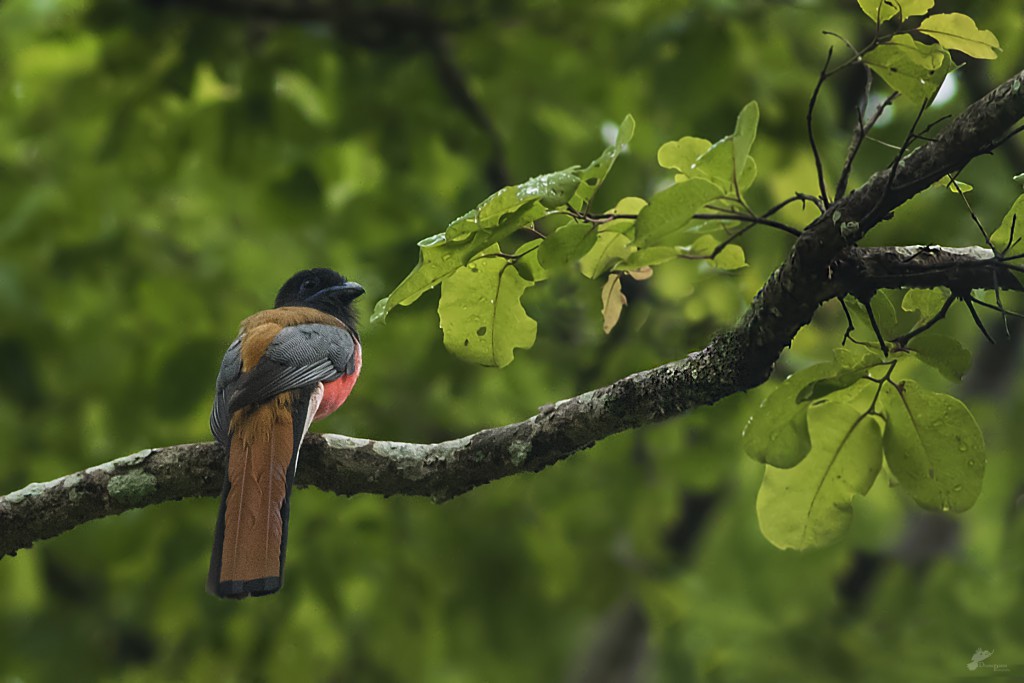
One the most beautiful birds that occur in Western Ghats, the Malabar Trogon is a brightly coloured and a sexually dimorphic bird. The Male has the bright crimson red bottom and the Female lacks the bright red colour and is largely cinnamon, with a darker shade on her head and breast. The wings are brown. In Kerala, it’s known as “Thee-kakka” – meaning a fire-crow – due to its bright crimson red coloured underside.
GREAT INDIAN HORNBILL:
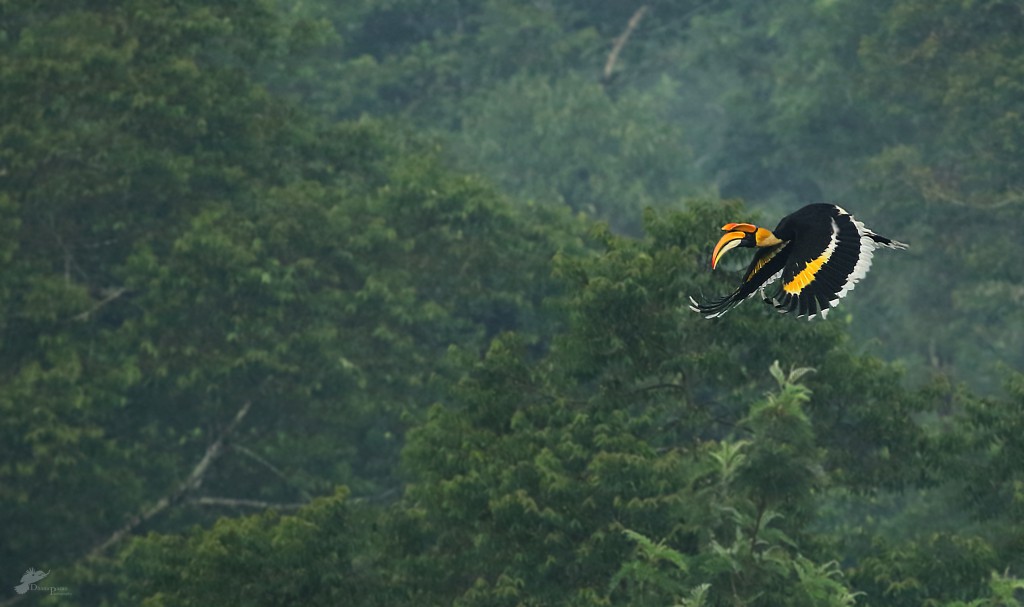
Considered as the feathered foresters, hornbills dispose various tree seeds that help re-forestation. Reproduction patterns in hornbills are complex and unique.
The pairs will perform a courtship ritual that may include preening, feeding, wing and tail displays, and even beating their bills on the ground. The female will then seal herself up in the tree hollow for up to four months while raising her chicks, using regurgitated food, droppings, and mud brought to her by the male to seal the opening of the tree hollow until only a small slit remains. This creates an almost predator-proof nest. An omnivorous bird that it is, diets on figs, small birds, rodents and bats.

